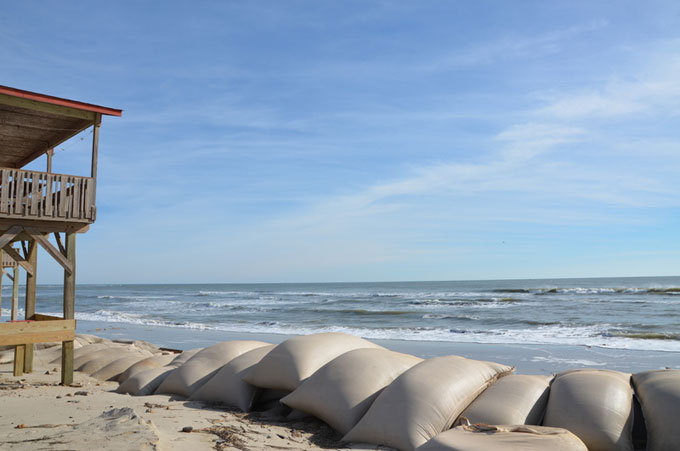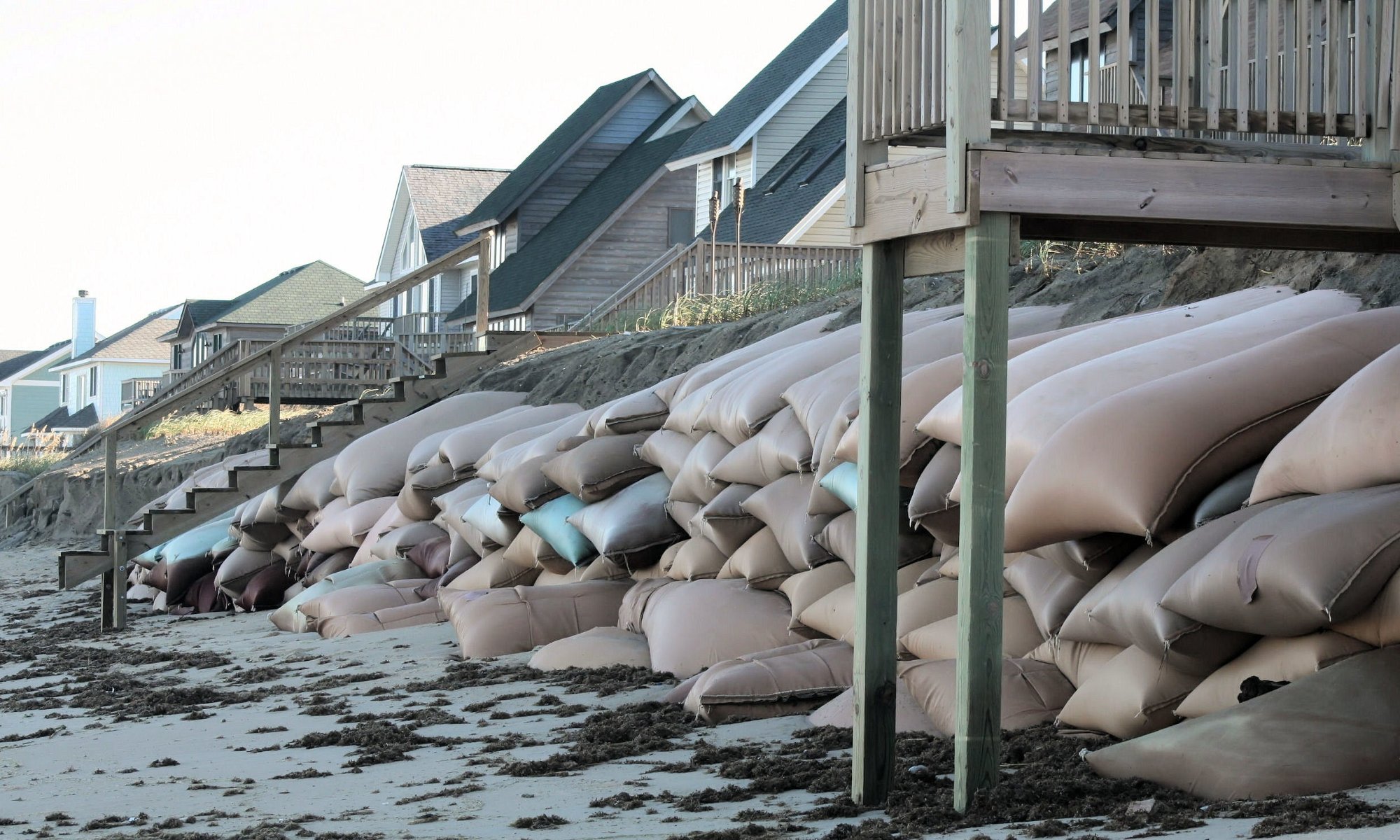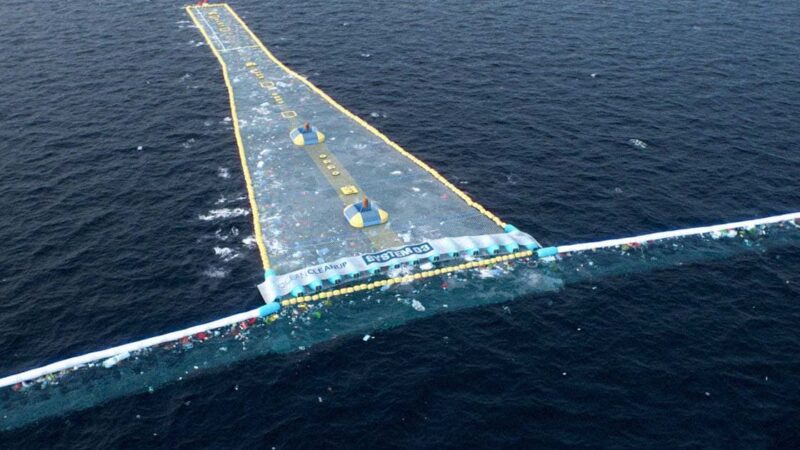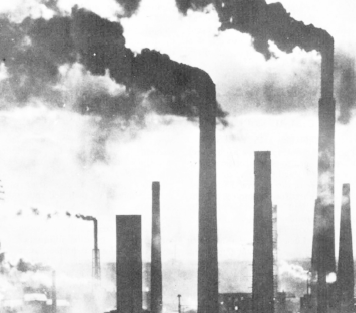No adaptation approach lasts forever in the face of increasing stresses posed by a changing climate. Think of each such effort’s having a ‘use-by’ date. How then to help strengthen future resilience?
By Tyler Felgenhauer

Climate adaptation responses are not all created equal … and they have varying design lives.
The term “adaptation” encompasses strategies designed to respond to climate change damages specific to individual economic sectors, for example agriculture, infrastructure, and energy. Along with responding within various sectors, they are designed also to address specific types of climate impacts faced – for instance sea-level rise, droughts, floods, and heat waves.
An adaptation limit can be defined simply as “the point at which the level of climate damages has surpassed the capacity of the current adaptation approach, and net adaptation – adaptation benefits minus damage costs – has dropped to zero.”*
The adaptation limit threshold is reached when climate damages exceed the existing adaptation response. At that point, existing adaptation responses may still provide benefits but continuing impacts will exceed the adaptive capacity.
Key elements of a damage-response system
Determining when adaptation will fail depends on complex interactions of multiple environmental and societal systems. On the environmental side are links between the changing climate and the degree to which local ecological systems are resilient to those changes. On the societal side is the relationship between economic and other value judgments about climate change impacts, paired with the technological ability to adapt. Taken together these four elements can be characterized as the climate damage and adaptation response – or damage-response – system.
Different damage-response systems can be distinguished by three attributes:
1. At what level of climate impacts is the adaptation capacity exceeded? This adaptation limit threshold will vary depending on the sector and the type of damages experienced.
2. How does the adaptation degrade and fail over time? Does the adaptive capacity degrade gradually and fail gradually, remain constant until suddenly failing catastrophically, or follow some other pattern?
3. Once the adaptation has begun to fail, are these damages temporary – providing a potential for recovery – or are the losses permanent?
Examples of limited adaptation in practice
How do adaptation limits appear in practice? Each sector of the economy could experience them differently. For instance:
- Human health and well-being. Rising persistence and frequency of droughts or floods could eventually reach a level that creates unsustainable living conditions in some areas. Given current projections of sea-level rise, some coastal settlements likely will face permanent inundation. Two analysts wrote in 2010 that the habitability of some areas could be compromised as a result of more heat-related diseases, and that rising air temperatures could make some regions less habitable, even with much wider, and largely impractical, use of air conditioning.
- Infrastructure. Extreme heat can deform and buckle roads, rails, and bridges, exceeding their designed engineering limits. Researchers in 2009 and 2013 investigated how the effects on roadways of increased freeze-thaw cycles exacerbated by climate change can increase maintenance frequency and shorten their practical life-times. In addition, practical engineering limits exist on the height of seawalls and levees, or on the size of storm sewers and culverts. Increasing frequency of coastal and riparian flooding (and of “blue sky” floods) can eventually lead to permanent inundation of infrastructure, leaving levees and seawalls, for instance, no longer able to provide adequate protection.
- Agriculture. Climate change can affect agriculture in multiple ways – for instance through early heavy precipitation events, heat waves, a prolonged drought, higher mean temperatures, or salt-water intrusion from sea-level rise. These adverse effects can make it difficult or impossible to avoid productivity declines or crop failures. Adaptation responses such as planting different crops or altering their timing or location, or using fertilizer and pest management practices can bring benefits; but more severe climate change limits the effectiveness of these approaches. For example, one researcher (R. Warren) finds declining crop yields and large areas of cropland becoming unsuitable for cultivation if temperature rises by about 7 degrees Fahrenheit (4 degrees C).
- Energy. Generating electric power from combustion, nuclear, and hydropower generation requires large amounts of water withdrawal and consumption, and low water levels can reduce production from these power plants. Additionally, rising water temperatures can warm a plant’s cooling water so that it becomes too warm for efficient electricity generation, and sea-level rise can leave coastal power generation facilities unprotected.
Needed: More, better, and transformational adaptation
Mitigation and geoengineering options will not address the needs posed by local-level adaptation that is failing in the near term. For policymakers concerned with future adaptation investment decisions, the response to failing adaptation must involve regular investments so long as benefits – in the form of avoided damages – exceed costs. Depending on the sector, a combination of more, better, or transformational adaptation might prevent a system from passing its adaptation limits threshold.
The more adaptation quantitative approach simply means raising adaptation capacity incrementally with current technology, so long as repeated adaptation investments are additive. In other words, doing more of the same, such as adding more air conditioners to those already working but no longer meeting the needs.
Another example, explained in an earlier report: To address sea-level rise, additional beach renourishment could replace sand that had washed away; the height of seawalls could be increased to prevent overtopping; or levees and other coastal engineering could be extended. For agriculture, additional irrigation water could be supplied, if available. And homes could be retrofitted with more insulation and/or more powerful air conditioners.
A second option, better adaptation, involves a quality approach using new and innovative methods or technologies independent of previous efforts. For instance, a farmer may have a set of available adaptation options and technologies in order of rising costs – e.g., changing planting and harvesting times, intensifying irrigation, switching to new heat- or drought-resistant seed varieties, or changing crops altogether. Such movement up an “adaptation response ladder” assumes the availability of alternative and new adaptation approaches that can substitute for earlier ones that have reached their limit.
What if neither “more” nor “better” is sufficient? In that case, transformational adaptation changes the structure of the damage-response system itself, in turn changing the impact of damages and the pathway of adaptation failure. In changing the system’s behavior rather than the adaption efforts, successful transformational adaptation changes the calculus of all future adaptation decisions. For example, it may be useful to craft a new system where adaptation degrades gradually – a “graceful failure,” rather than collapsing suddenly.
Transformational adaptation could be initiated in anticipation of expected adaptation failures, but in practice it may be done as a last resort, when all other adaptation options have been exhausted. On this point, one team of researchers finds that “The key tension appears to be whether actors choose to transform or have transformation forced upon them.”
Some examples of transformational adaptation fall under the “retreat or abandon” rubric, such as rolling easements for sea-level rise, the creation of tourist islands on the North Carolina Outer Banks with the demise of its road system, or migration away from hazardous areas. For agriculture, transformational adaptation could mean land abandonment and moving farms to new areas, though the transition and absolute costs of such a move would likely be higher than leaving farming altogether.
Preparing now for an uncertain future
As the effects of climate change grow increasingly severe, how can we achieve “sustainable adaptation”? Three themes can guide our thinking:
- Work with what we have already. How can we raise the capacity and/or lifetime of current adaptation defenses to delay adaptation failure? The first steps would involve better understanding:
– which current adaptation should be retrofitted and which should be replaced;
– the ease or difficulty of substituting one adaptation type for another that is failing; and
– how in some cases an investment now in “option stock” adaptation may allow for opportunities to learn about future climate impacts and preserve options to implement cheaper adaptation in the future. - Learn more about when adaptation will fail, and how. As the National Research Council found, reducing uncertainty now can provide early warning to local decision makers as they prepare for inevitable disruption in the future, promoting planned rather than emergency adaptation.
- Develop new adaptation responses for when adaptation limits are breached.An understanding of appropriate responses to adaptation limits requires knowledge of the type of likely adaptation failure (gradual or catastrophic) and the feasibility of responding.
In the end, and as adaptation strategies become increasingly critical in addressing ongoing climate challenges, those strategies themselves must remain flexible and responsive to the changing, and worsening, climate risks they are meant to address. That will require continued and ongoing flexibility and creativity, and also resources, on the part of adaptation experts and managers.
* This piece is excerpted and edited and draws some direct quotations from the author’s “Addressing the limits to adaptation across four damage-response systems,” which has a complete list of sources.
Featured Image


